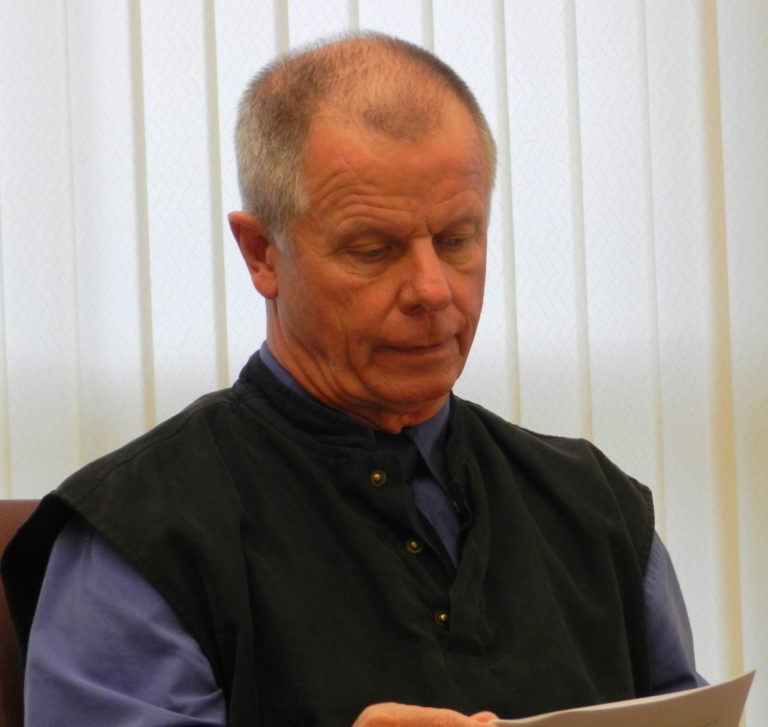

There are a lot of bad arguments against increased flows along Valley rivers. Many pit people against fish. Others use reductionist tactics, citing the dollar costs of saving threatened species but omitting long-term recovery goals. Some rise from merely bad to bizarre.
Oakdale Irrigation District (OID) Manager Steve Knell, for example, has decided increased flows are all about saving “220 nesting pair” of salmon. Not surprisingly, Knell concludes that the costs—$1,000,000 per nesting pair—aren’t worth the effort.
Not content with a merely fanciful mischaracterization of the state’s proposal, Knell goes on to an even more delusional scenario. In Knell’s fully-warped version of motives behind increased flows, it’s all about, “protein on the plate.”
According to Knell, “The state wants us to fallow 100,000 acres of farmland, [and] absorb $260,000,000 in annual economic losses in order to generate 22,000 pounds of fish protein.” He then adds, “You can generate the same 22,000 pounds of protein from what comes off just 10 acres of almond trees.”
Gee, we’re sure glad Mr. Knell has cleared up our confusion. Now that we know river water is all about protein, we can all stop worrying about sustainable salmon runs, San Joaquin Delta farmers, and the role of fresh water in maintaining the Delta and San Francisco Bay ecosystem.
We can stop troubling ourselves with frivolous concerns about salt-water intrusion, harm from non-native species like water hyacinths, dangers posed by cyanobacteria blooms, and all other sundry side effects of low flows. Yes, now that we know increased flows aren’t about living rivers and complex webs of life, we can get down to the serious business of producing protein.
And if Mr. Knell’s numbers are right, we can even save him and ourselves from many of the state’s ongoing water problems. After all, it’s Mr. Knell who finds it necessary to send OID water south every year.
Yes, this same general manager of the most water-rich district in the San Joaquin Valley, who is all of a sudden expressing concerns about groundwater deficits and local ag production, is the one who even in drought years has found it expedient to sell water to buyers like Westlands Water District. OID water sales are necessary because OID’s senior customers pay well under five dollars an acre foot for water, a sum far below what is needed just for operation and maintenance costs, not to mention district improvements.
But now that we know water and rivers are all about protein, we can free up enough water for everyone and maybe even run a bargain sale. The key element—who knows how we all missed it—is soybeans.
Mr. Knell clearly thinks that the protein-producing advantages of almonds over fish offer ironclad arguments against increasing river flows. But if we’re really serious about producing protein, we can harness the hidden powers of soybeans and have both more protein and more water.
Consider this: one cup of soybeans contains twenty-nine grams of protein compared to a mere twenty grams for one cup of almonds. But that’s not all: Soybeans need only nineteen inches of water from planting to harvest. Compare that figure to the thirty-six to forty-eight inches needed by almonds.
The advantages of soybeans to almonds are almost too self-evident. Once we calculate the benefit ratios of river flows to protein production, we can reduce overall water use by replacing almond orchards with fields of protein-rich and water-miserly soybeans. We’ll have more protein and more water as well. Thanks to Mr. Knell, we’ll be in a win-win situation for everyone.
Some will argue that reducing the value of rivers to a mere matter of protein production is absurdly simplistic, but then there are naysayers in every crowd.
Good article, I am considering dropping my EVERGREEN support for Capital Public.Radio because of their maddening”almond trees are not unique among trees in their need for water” HELLO! We don ‘t see millions of acres monocropped of Magnolis, do we?
Comments are closed.